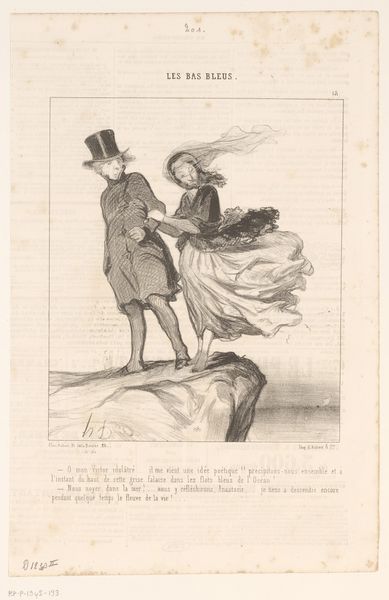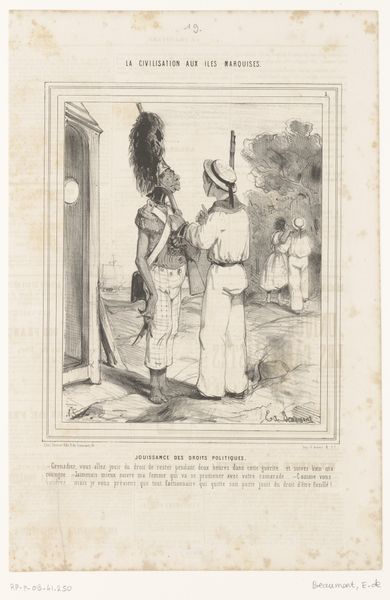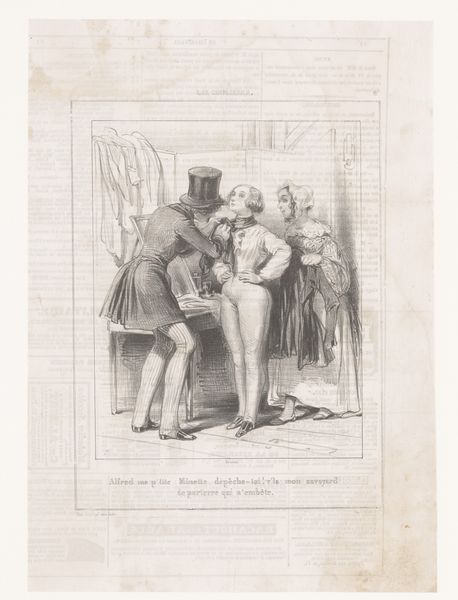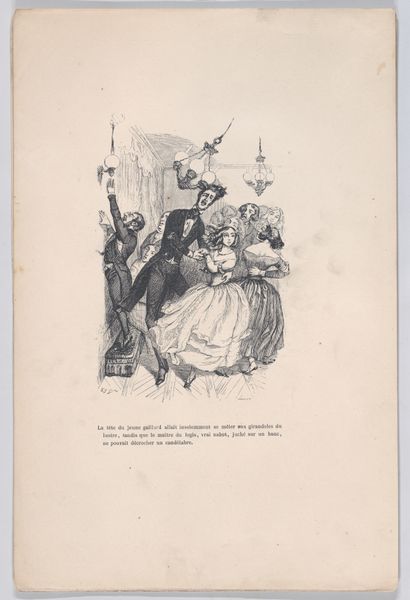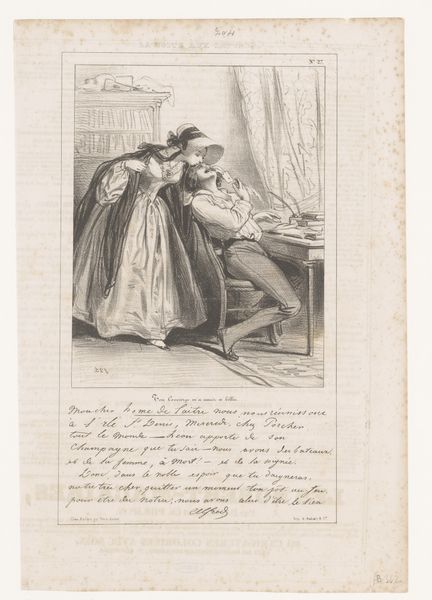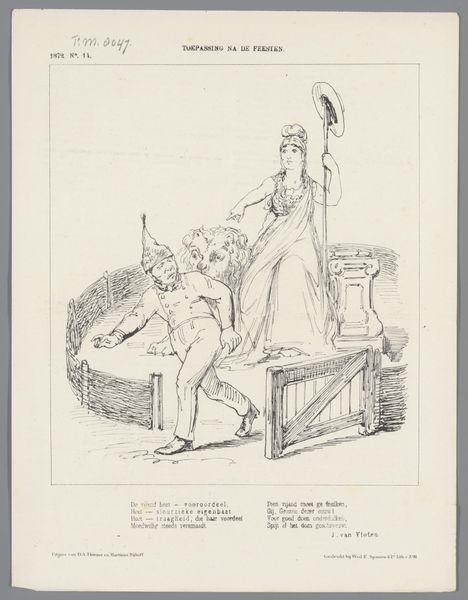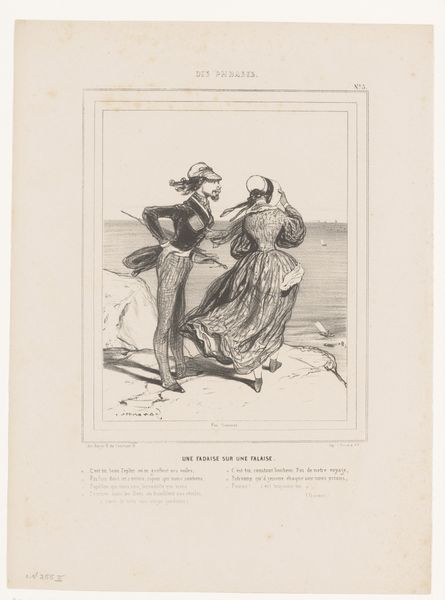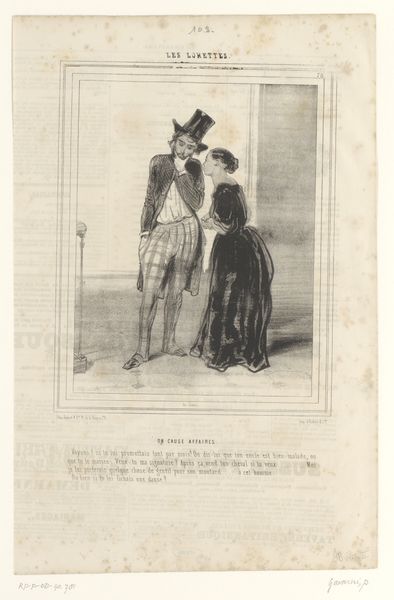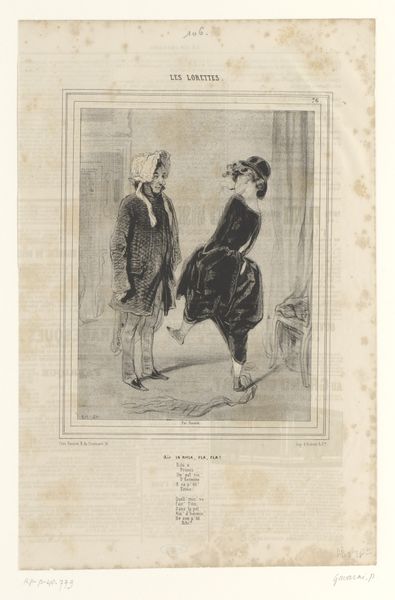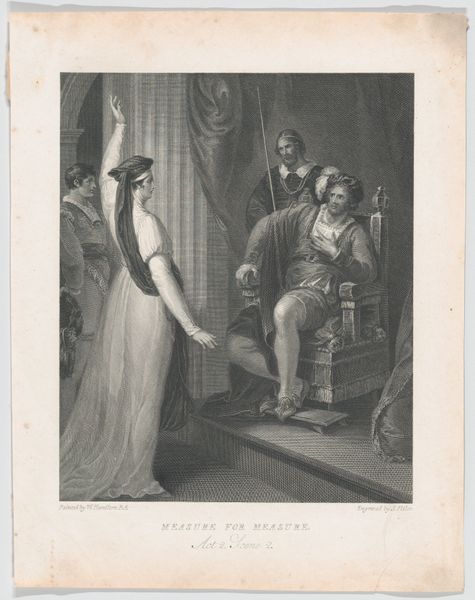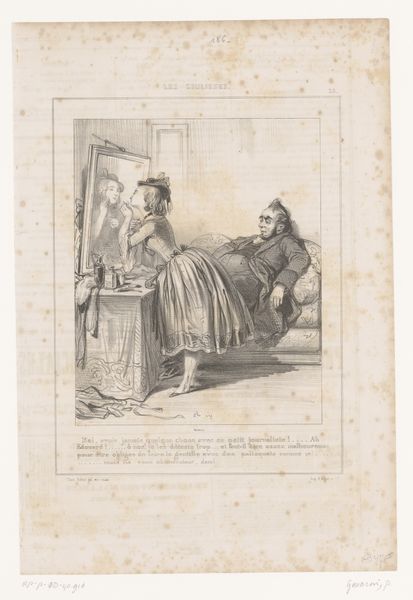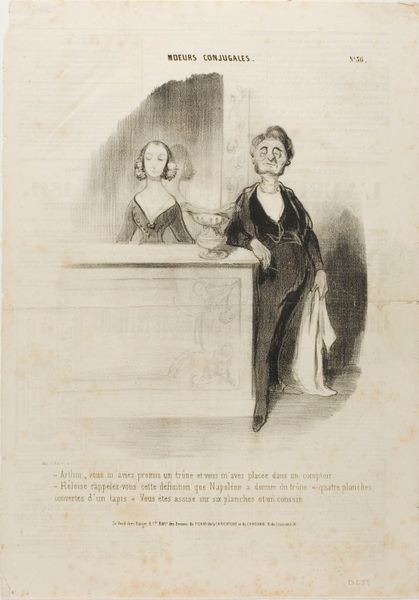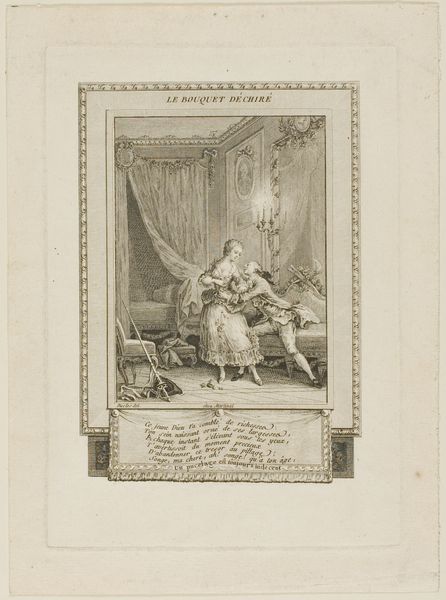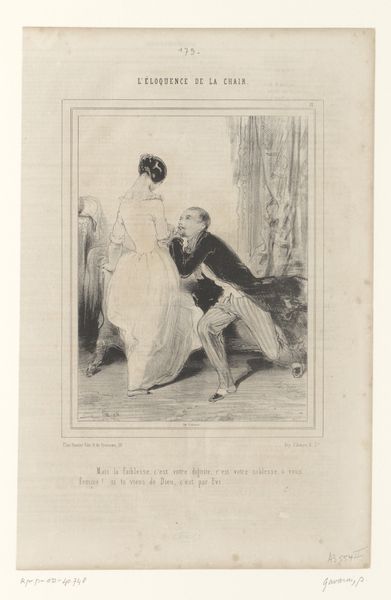
lithograph, print
#
portrait
#
lithograph
# print
#
caricature
#
romanticism
#
19th century
Dimensions: height 335 mm, width 243 mm
Copyright: Rijks Museum: Open Domain
Curator: This is "Jongeman bekijkt zichzelf in de spiegel" by Honoré Daumier, created in 1837. It's a lithograph, currently held at the Rijksmuseum. What strikes you about it at first glance? Editor: Well, the most immediate thing is the utter vanity of the figure. The almost grotesque elongation of his form and the theatrical pose. There's a darkly comic feel to it, as if he is so absorbed in his own reflection. It hints at societal satire, don’t you think? Curator: Absolutely, it’s pure satire. Daumier was a master of social commentary. I can almost feel the scene unfolding like a snippet from a flamboyant comedy, the dandy, cane in hand, striking poses for himself and completely oblivious to, say, reality, perhaps. What could this piece from the romanticism style be highlighting about the society of the day? Editor: The exaggerated elegance, the fixation on appearances… it speaks to the bourgeois culture of 19th-century France, this almost desperate need to appear refined, successful. There is an undeniable level of homoerotic tension there. He is in love with his own reflection as much as he might long for someone who might reciprocate. Narcissus myth with a gender twist. It reads, and makes the moment more fraught. Curator: An excellent point, it certainly amplifies that reading! How do you interpret his decision to work with lithography? What impact does the chosen medium create, visually and emotionally? Editor: Lithography allowed for mass production, which means these images could reach a wider audience. It democratized the critique, making it accessible beyond the elite circles it mocked. The harsh lines and contrasts in the print intensify the caricature. And maybe even speak of the artist's frustration with the prevailing societal values? Curator: Maybe that same society that produced such vanities… What does the rest of the scene offer to this story? Editor: Beyond the figure, there is almost nothing. And in its almost minimalist setting is a hidden class status – even more is signified when taking into account how, when and for whom lithographs were usually produced and consumed. Curator: It’s been lovely exploring Daumier's piece and peeling back those layers of vanity, critique, and craftsmanship. The reflection really reveals so much. Editor: Indeed. "Jongeman bekijkt zichzelf in de spiegel" holds a fascinating mirror up to society, both then and perhaps even now. Food for thought on image and performance.
Comments
No comments
Be the first to comment and join the conversation on the ultimate creative platform.
